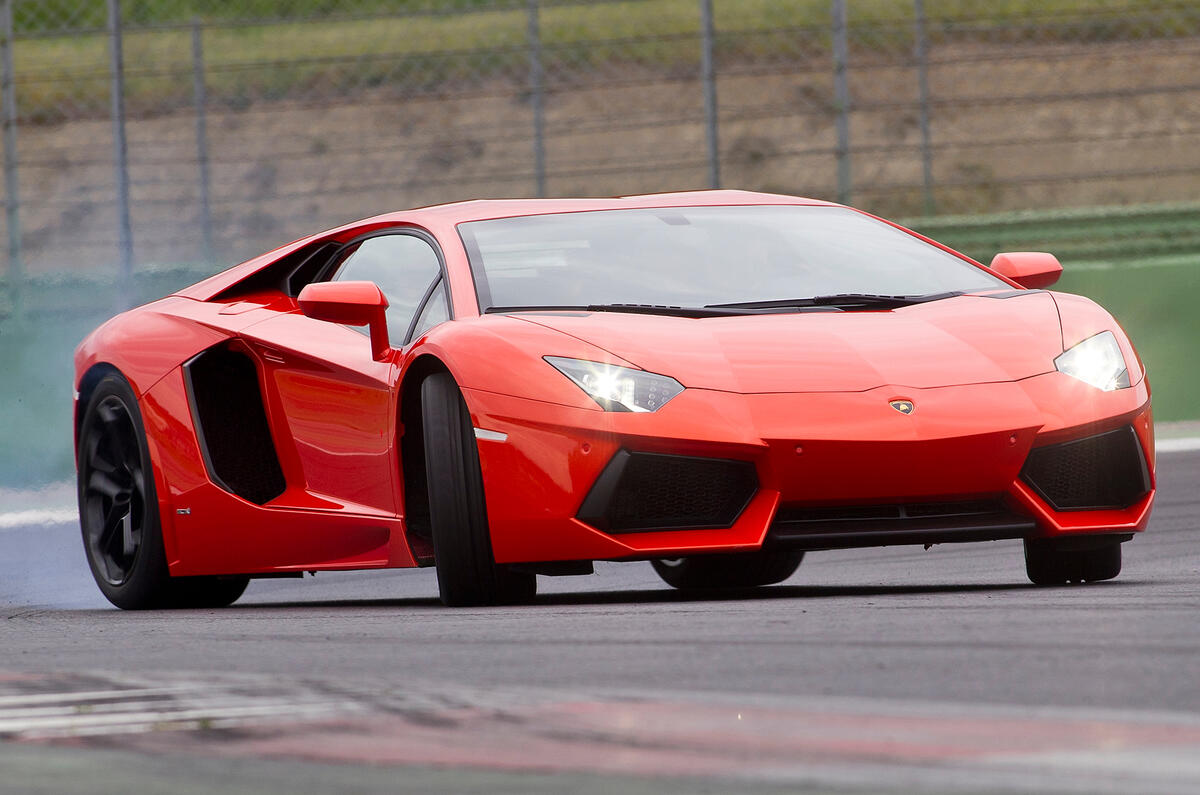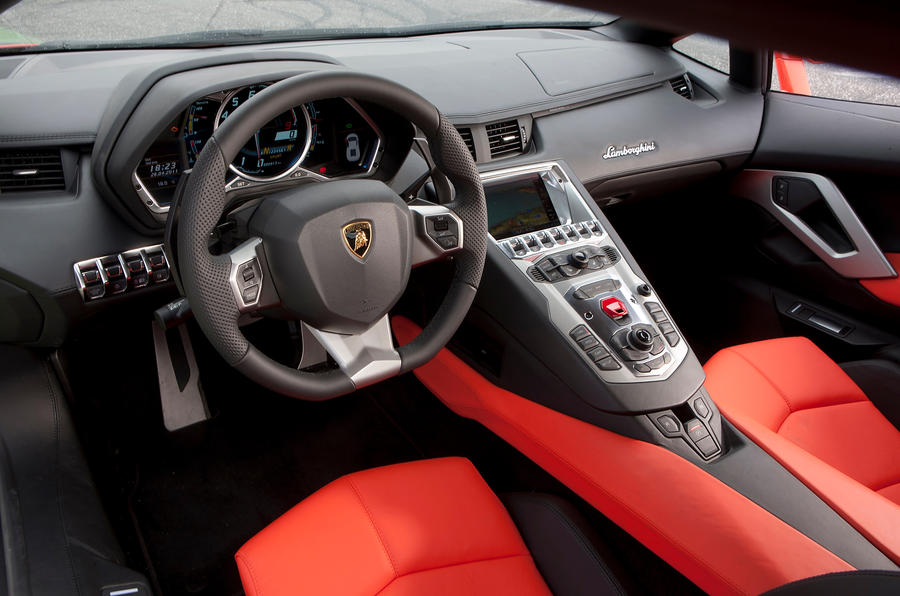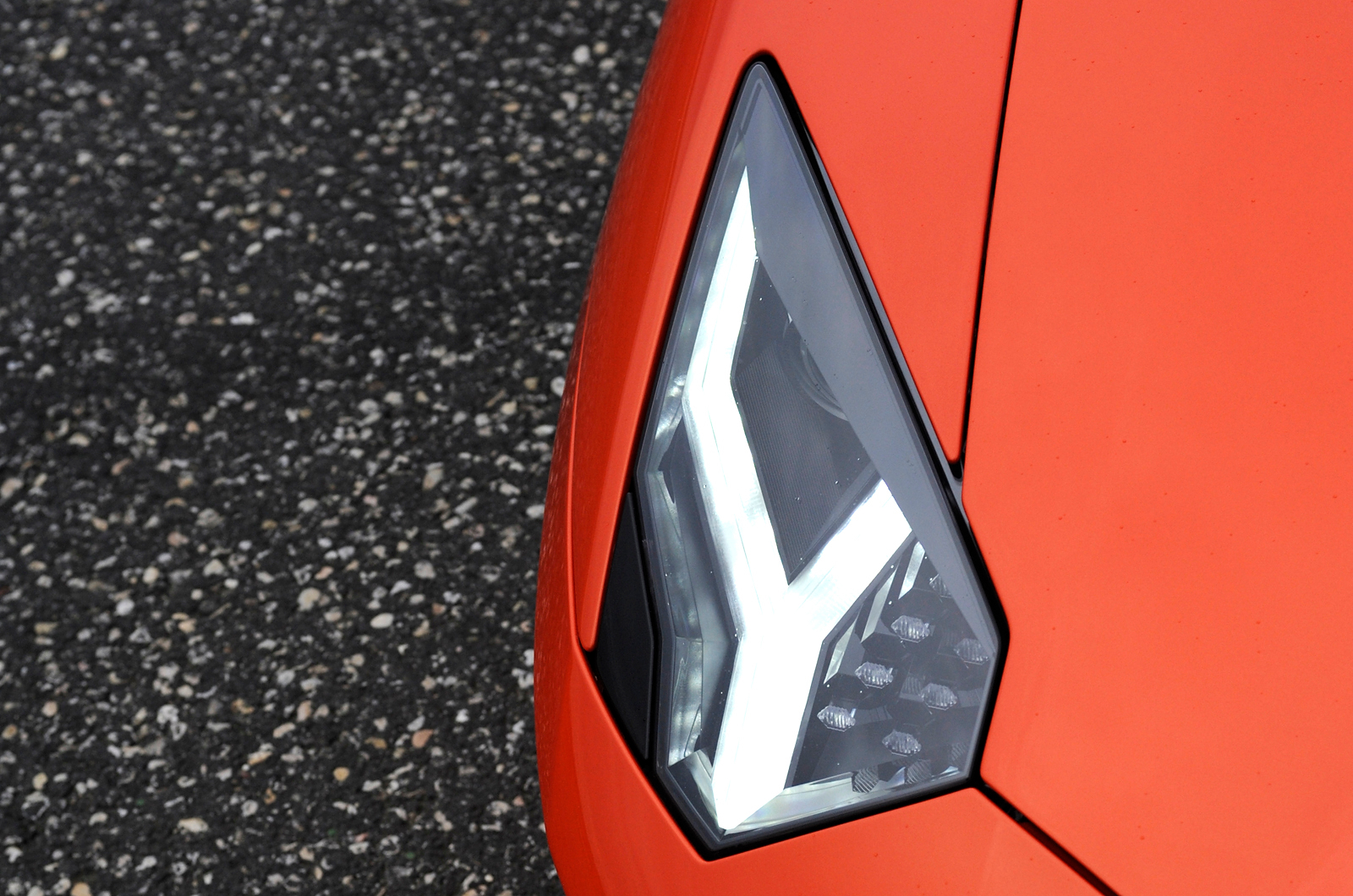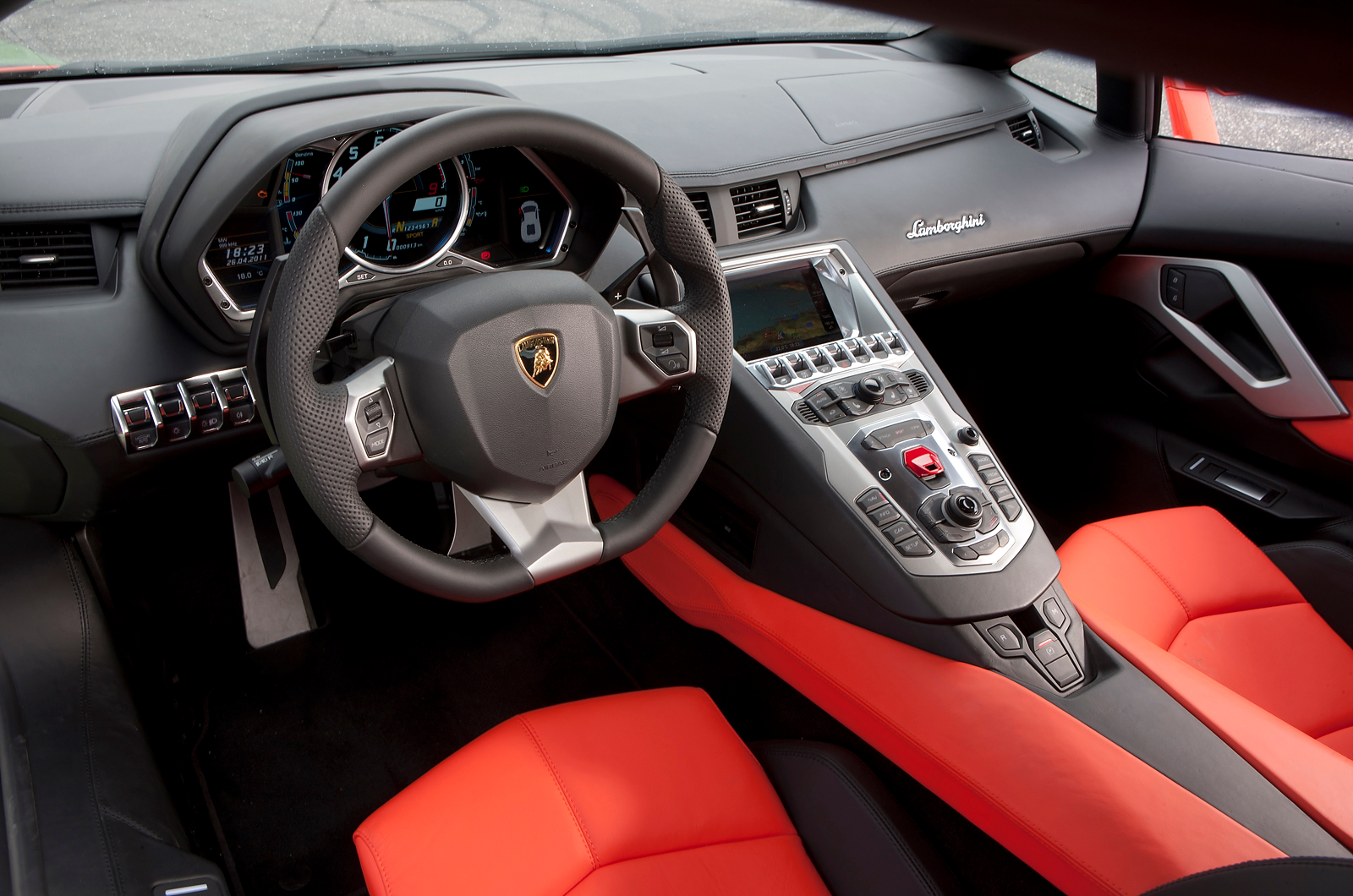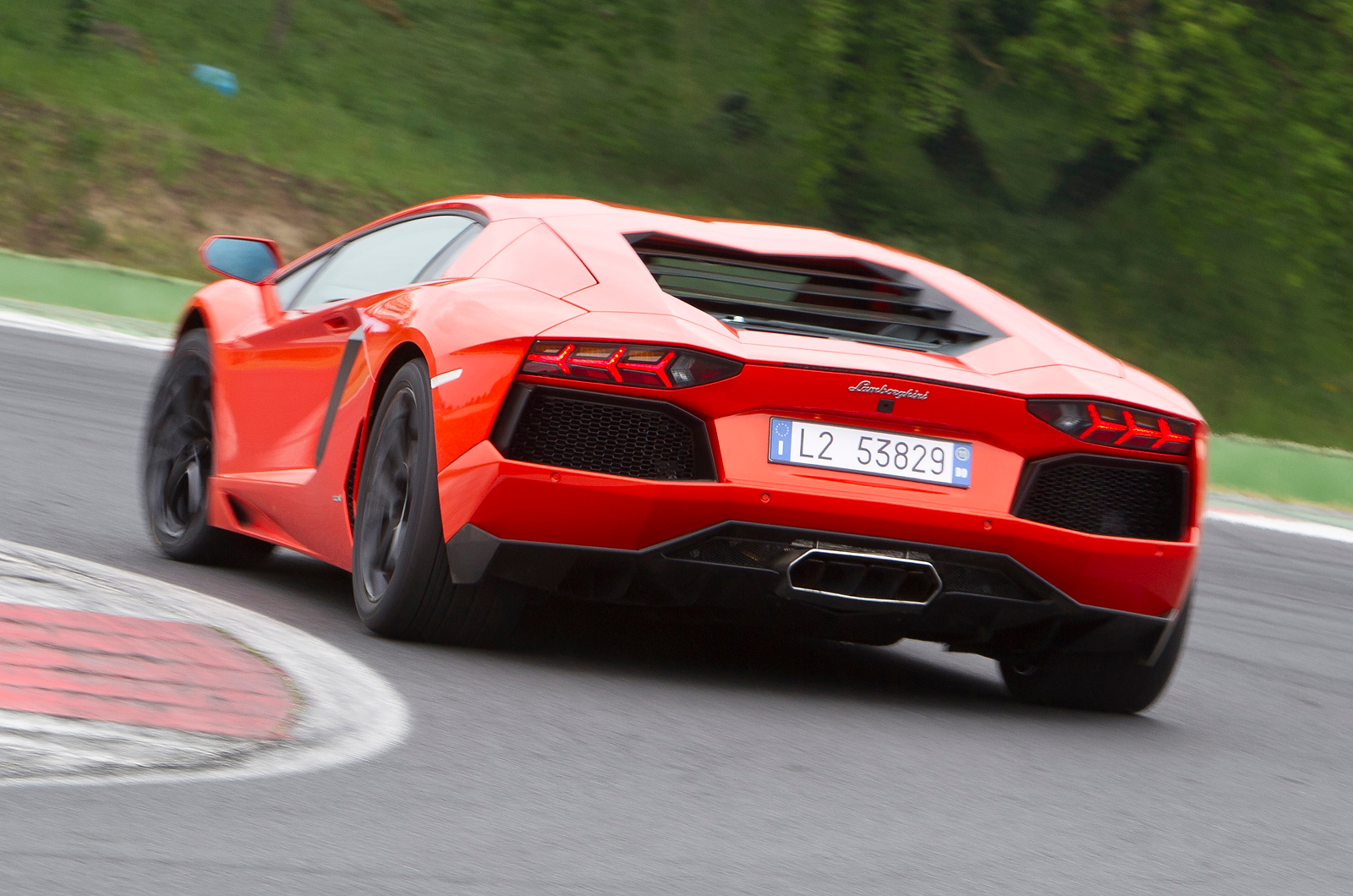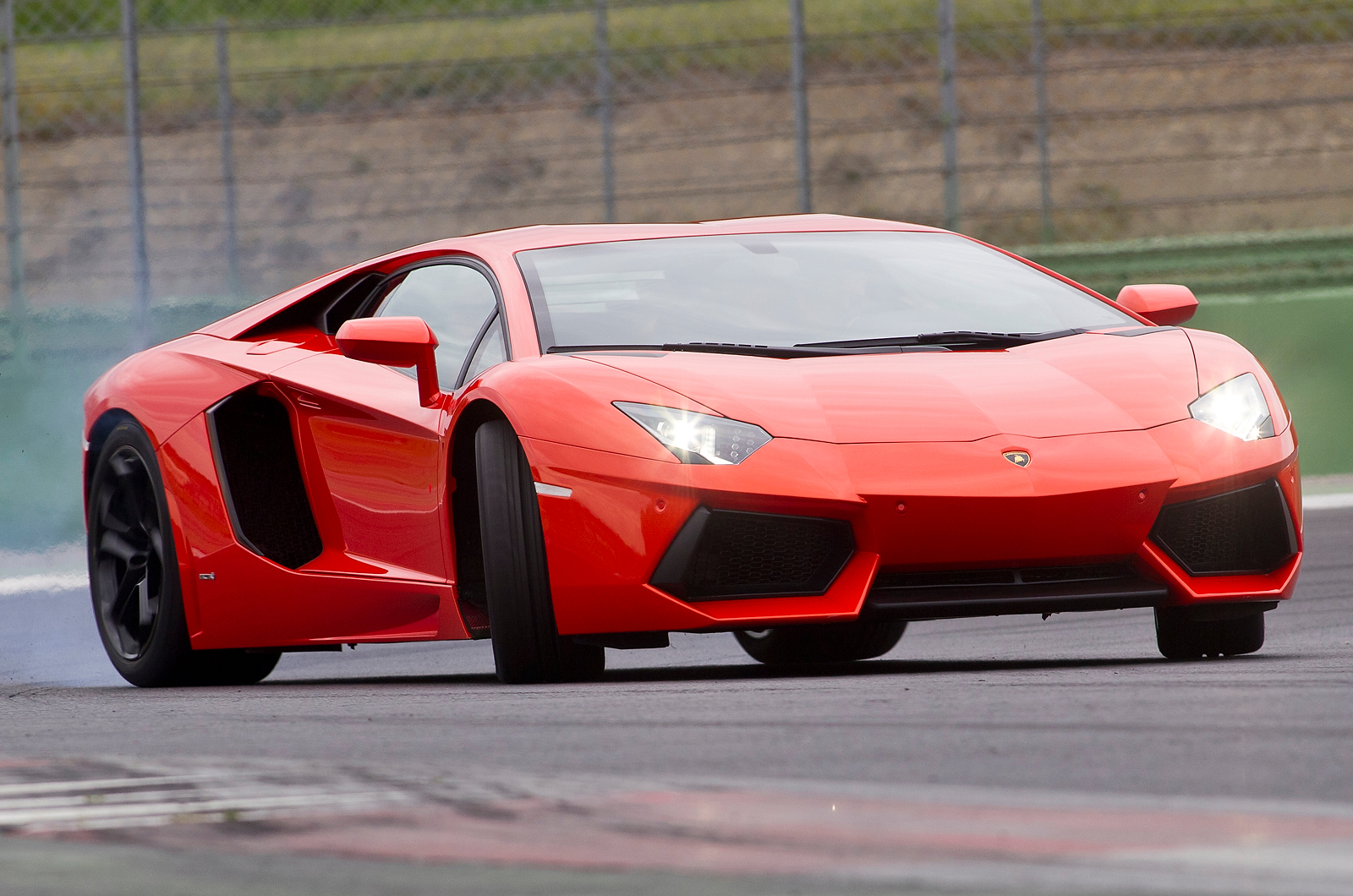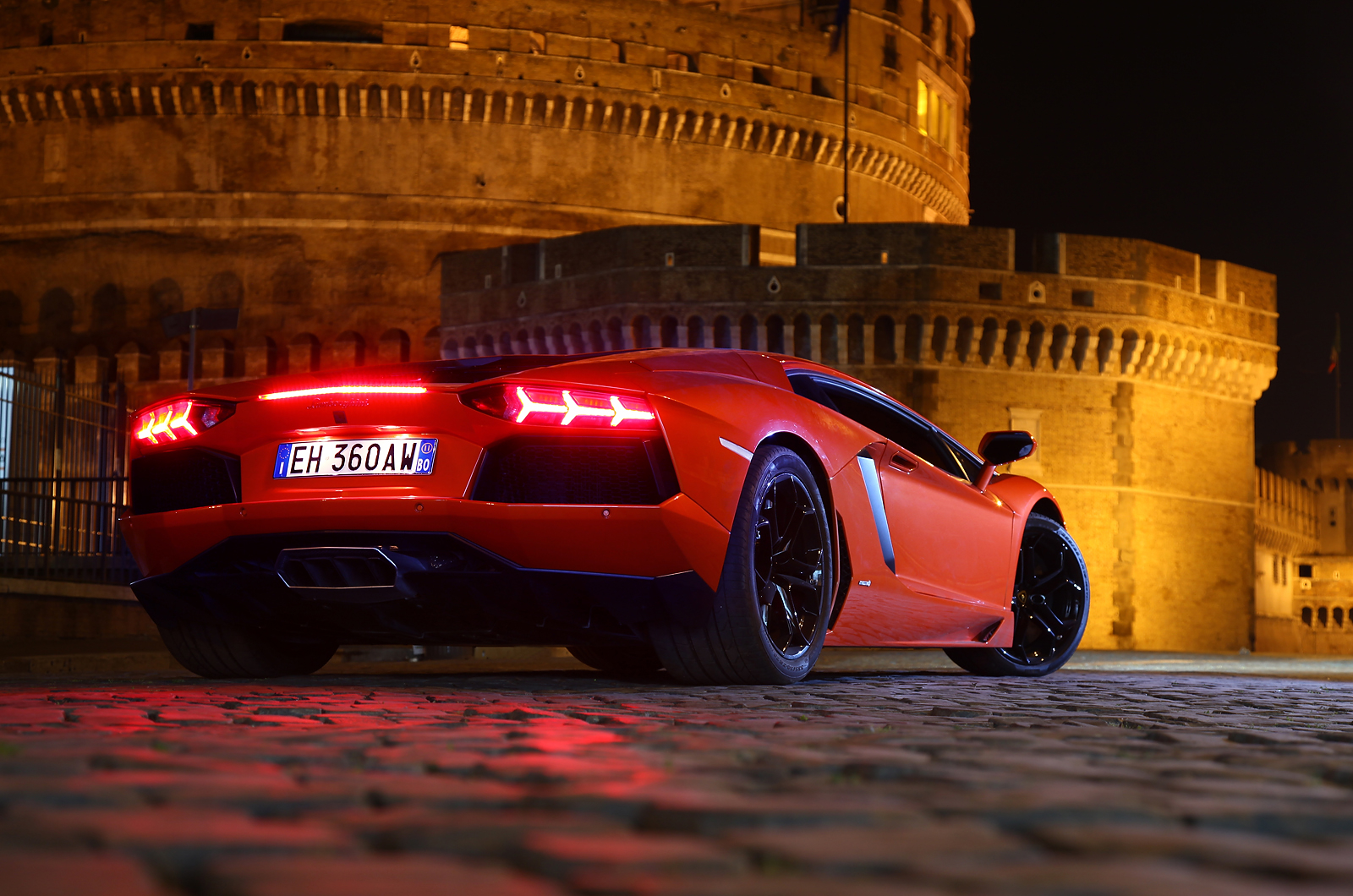All mid-engined V12 Lambos of the past 40 years have had scissor doors, a tradition the Lamborghini Aventador is not about to break.
They draw gasps from your passenger but offer only rather awkward access to the interior and an inelegant escape during which the tall must take care not to crack their cranium on the upswept edge of the door.
Once inside, however, there is a feast for your eyes in the form of a TFT instrument panel that looks like a refugee from some abandoned skunkworks fighter aircraft. And unlike most eye-catching instruments, this one also really works. So it’s such a shame to see a central navigation display plundered from a previous-generation Audi A4, along with its barely disguised MMI switchgear.
When Ferrari created the 456 in 1992, it threw away all the visible Fiat parts bin components that had so blighted their interiors for years, but 20 years on and despite that colossal list price, it’s a lead Lamborghini appears disinclined to follow.
But at least it means the cabin is easy to understand and operate. And while the Aventador’s brand new design has not brought a perfect driving position (we’d have preferred a touch more longitudinal travel on both the seat runners and steering wheel), visibility is surprisingly good, given how low and wide it is.
Boot space is impressive, too, but storage opportunities on board are negligible. The glovebox is minuscule and there’s a lidded box between the seats that provides somewhere to put the disappointingly obvious Audi key but little else.
As for the standard equipment the Aventador gets all the safety electrical tech one would expect from ABS, stability control, hill start assist, anti-slip control along with the ability to change the characteristics through Lambo's drive select system. Inside is dominated by the Audi-derived infotainment system, but it does come with sat nav, Bluetooth and USB connectivity, while there is also dual-zone climate control, automatic lights and wipers, bi-xenon headlights and 20in alloy wheels wearing Pirelli P-Zero tyres.
The Pirelli edition sports a two-tone colour scheme with a choice of opting for a matte black roof and a glossy paint job or vice versa while Lamborghini's Centro Stile development centre has included exclusive equipment options on the Aventador, while only 50 of the Miura Homage were made but were available in the Miura's 18 original colour options with the option of painting the lower skirts in gold or matte silver. Inside there was lots of Miura Homage decals, stitching and badging dotted around.
The majority of the Aventador S differences revolve around technical changes, with this V12 Lambo coming with four-wheel steering and a magneto-rheological shock absorbers working on a pushrod system to modify the suspensions behaviour according to the road conditions, while also coming a fully personalisable fourth driving mode. Topping the range is the Superveloce which gets a stripped out interior dominated by large sections of carbonfibre being visible but also include swathes of Alcantara furnishing the interior and a dynamic steering rack that makes the SV all the more responsive.
While the standard equipment may seem thin on the ground, the options list certainly isn't with a wealth of colour choices for the body, interior stitching and brake calipers, audio options and other convenience devices to choose from.


